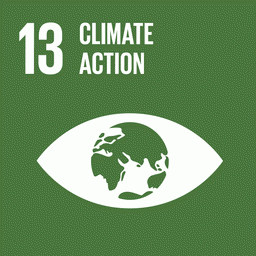By Camila Santana*
On Thursday (6), the Public Forests Observatory was launched. The platform, created by IPAM (Amazon Environmental Research Institute) and Movimento Amazônia de Pé (Standing Amazon Movement), aims to centralize and make available up-to-date data on deforestation, carbon stocks and biodiversity in the Amazon region’s public forests, helping society to formulate more effective public policies for their protection. The launch took place during a public hearing of the Chamber of Deputies’ Commission on the Amazon and Original and Traditional Peoples.
“This platform could be called the Observatory of Life, the Earth or the Planet,” said federal deputy Célia Xakriabá, who requested the public hearing. Covering 56.5 million hectares, the FPND (Public Non-Destined Forests) in the Amazon represent one of Brazil’s greatest natural assets. For this reason, the tool launched today serves to monitor the process of allocating these forests, seeking to provide transparency and highlight the proper protection of these vast areas. On the occasion, the parliamentarian also highlighted the importance of initiatives like these to combat false information through scientific data and to consolidate state environmental policies, in addition to government policies.
Social monitoring
“Any social monitoring instrument is welcome and fundamental,” said Marcelo Trevisan, director of the Department of Territorial Environmental Planning at the Ministry of the Environment and Climate Change, commenting on the Observatory of Public Forests. “Public policy is not just made by public bodies, but through dialog and the collective construction of society. The platform will allow us to make more assertive decisions to protect these areas and promote sustainable development,” he added.
Data shows that the FPND have been devastated by deforestation, illegal mining and land grabbing. As such, IPAM studies show that half of the deforestation in the Amazon between 2019 and 2021 took place on public lands, around 30% of this total in FPNDs. In addition, between 2016 and 2020, 32% of the area of these forests was the target of land grabbing. These figures show the urgency of concrete actions to protect these areas and the Observatory of Public Forests is here to give transparency to this data.
“Land grabbing has been on the rise within these Non-Destined Public Forests. We need to know about these areas so that, together with the state and federal governments, we can demand a reduction in this deforestation,” explained IPAM researcher Livia Laureto. Land grabbing in the FPND occurs mainly through the fraudulent use of the CAR (Rural Environmental Registry). “Today, of the just over 50 million hectares of FPND in the Amazon, around 30 million are overlapping with rural property CARs, which indicates some sign of land grabbing.” The researcher explained that, after irregularly declaring the property, the person deforests, burns and often changes the use of that land. “The damage caused by losing this forest affects everything from a local scale to larger scales. Whether it’s altering the rainfall regime or losing local pollinators. It’s a cascade effect that will affect local communities, biodiversity and agriculture,” he warned.
Indigenous peoples and traditional communities
Allocating FPNDs to the care of indigenous peoples, quilombolas, small extractive producers and creating conservation units is part of the solution. This is because the lands under the management of these groups have shown low rates of deforestation. For example, in indigenous territories, deforestation was only 1% over 30 years, according to data from the MapBiomas network for 2022.IPAM researcher Rebecca Maranhão recalled that “defining a sustainable use for that forest to be allocated to indigenous peoples, quilombolas, settlements and conservation units is provided for in the Forest Management Law.
Observatory
With a counter that shows data such as deforestation and areas pending allocation, the tool allows citizens to browse an interactive map and monitor the situation of the FPND. Through the map, society can access data on deforestation, carbon stock, overlapping CARs, endangered species and other relevant data within these forests.
With the platform, public officials have in their hands a repository of reliable scientific data that can be used as a basis for legislative proposals, budget demands and more assertive decision-making by governments.
Visit: https://deolhonasflorestaspublicas.org.br/
Photo: Ricardo Stuckert/PR
*IPAM Communications Analyst

